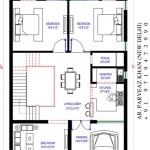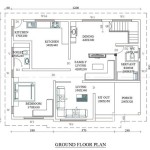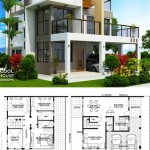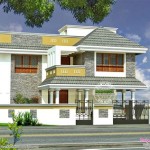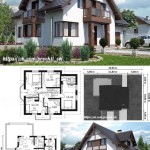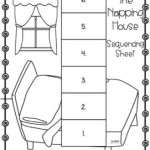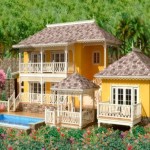Small House Plans: Maximizing Comfort in 1000 Sq Ft or Less
The appeal of smaller homes has been steadily growing in recent years. This trend is fueled by a variety of factors, including the desire for simplified living, reduced environmental impact, and lower housing costs. Small house plans, particularly those encompassing 1000 square feet or less, offer a viable solution for individuals and families seeking a more sustainable and affordable lifestyle. Developing a well-designed small house plan requires careful consideration of space utilization, functional layout, and efficient resource management. This article will explore key elements of small house plans within this size range.
Understanding the Benefits of Small House Living
Choosing a small house plan offers numerous advantages, both financial and lifestyle-related. The initial cost of construction or purchase is typically significantly lower compared to larger homes. This reduced upfront expense can free up capital for other investments or personal pursuits. Furthermore, smaller homes require less maintenance and upkeep, translating to lower expenditure on repairs, cleaning, and landscaping. Property taxes and insurance premiums are also generally lower for smaller dwellings, contributing to long-term cost savings.
Beyond the financial benefits, small house living promotes a simpler, less cluttered lifestyle. The limited square footage encourages residents to prioritize possessions and embrace minimalism. This can lead to a reduction in stress and an increased focus on experiences rather than material accumulation. Smaller homes also have a smaller environmental footprint, consuming less energy for heating and cooling. This aligns with the growing awareness of environmental sustainability and the desire to reduce individual carbon emissions.
Small house plans can be particularly appealing to various demographics, including single individuals, young couples, retirees, and those seeking vacation homes. For single individuals, a small house provides a comfortable and manageable living space without the burden of excessive square footage. Young couples can utilize a small home as a starter home, allowing them to build equity and save for future investments. Retirees may find a small house easier to maintain and more suitable for their changing needs. Finally, small house plans are ideal for vacation homes or rental properties, offering a cost-effective solution for temporary or seasonal accommodations.
Key Considerations in Small House Plan Design
Designing a small house plan requires meticulous planning and a focus on optimizing every square foot. It is crucial to prioritize functionality and create a layout that maximizes space efficiency. Open floor plans are a common feature in small house designs, as they create a sense of spaciousness and allow for flexible use of the living area. Combining the living room, dining area, and kitchen into a single open space can significantly enhance the feeling of openness.
Vertical space should be utilized effectively. High ceilings can create a more airy ambiance, and loft spaces can be incorporated for sleeping areas, storage, or recreational activities. Built-in storage solutions, such as shelving units, drawers, and cabinets, are essential for minimizing clutter and maximizing available space. Multi-functional furniture, such as sofa beds, folding tables, and storage ottomans, can also help to optimize space utilization.
Natural light plays a crucial role in creating a bright and welcoming atmosphere in a small house. Large windows, skylights, and glass doors can maximize natural light penetration, making the interior feel more spacious and inviting. Proper ventilation is also important for maintaining air quality and preventing moisture buildup. Carefully planned window placement can promote cross-ventilation, reducing the need for air conditioning and improving energy efficiency. The exterior design should also be considered to complement the interior layout and optimize outdoor living space. Porches, decks, and patios can extend the living area outdoors, providing additional space for relaxation, dining, and entertaining.
The selection of materials and finishes can also impact the overall feel of a small house. Light colors tend to make spaces appear larger and brighter, while darker colors can create a more intimate and cozy atmosphere. Mirrors can be strategically placed to reflect light and create the illusion of greater space. Durable and low-maintenance materials are recommended to minimize upkeep and ensure longevity. Energy-efficient appliances and fixtures can also help to reduce utility bills and promote sustainability.
Specific Design Elements for Small House Plans
Within the realm of small house plans, certain design elements are frequently employed to enhance functionality and maximize space utilization. Kitchen designs often incorporate compact appliances, such as apartment-sized refrigerators and combination microwave ovens. The use of vertical storage solutions, such as wall-mounted cabinets and pull-out pantries, is also common. Islands or peninsulas can provide additional counter space and serve as a breakfast bar or informal dining area.
Bathroom designs in small house plans typically prioritize efficient use of space. Shower stalls are often preferred over bathtubs to save space. Wall-mounted sinks and toilets can also create a more open and airy feel. Storage solutions, such as recessed shelves and medicine cabinets, are essential for keeping toiletries organized and out of sight. Proper ventilation is particularly important in bathrooms to prevent moisture buildup and mold growth.
Bedroom designs in small house plans often incorporate built-in closets or wardrobes to maximize storage space. Loft beds or bunk beds can be used to create additional floor space. The placement of windows and doors should be carefully considered to optimize natural light and ventilation. A minimalist approach to furniture is recommended to avoid clutter and maintain a sense of spaciousness. Flexible spaces that can be used as a home office, guest room, or hobby area are highly desirable in small house plans. These multi-functional spaces can adapt to changing needs and provide versatility within the limited square footage.
Heating and cooling systems should be carefully selected to ensure energy efficiency and comfort. Ductless mini-split systems are a popular choice for small houses, as they are relatively inexpensive to install and operate. Programmable thermostats can help to regulate temperature and reduce energy consumption. Proper insulation is essential for maintaining a comfortable indoor climate and minimizing energy loss. Energy-efficient windows and doors can also significantly reduce heating and cooling costs.
Outdoor living spaces are an integral part of small house plans. Porches, decks, and patios can extend the living area outdoors, providing additional space for relaxation, dining, and entertaining. Landscaping should be carefully planned to create a welcoming and aesthetically pleasing environment. Vertical gardens can be used to maximize green space in small yards. Outdoor storage solutions, such as sheds and storage boxes, can help to keep outdoor equipment and supplies organized.
Accessibility considerations are also important in small house design. Wide doorways and hallways can accommodate wheelchairs and walkers. Single-story layouts or ramps can eliminate the need for stairs. Accessible bathrooms and kitchens can be designed to meet the needs of individuals with disabilities. Incorporating universal design principles can make the home more comfortable and accessible for people of all ages and abilities.
The architectural style of a small house can vary depending on individual preferences and the surrounding environment. Popular styles for small houses include cottage style, farmhouse style, modern style, and minimalist style. The exterior design should be aesthetically pleasing and complement the surrounding landscape. The use of sustainable materials and construction techniques can further enhance the environmental friendliness of a small house.
Ultimately, the key to successful small house plan design is to prioritize functionality, efficiency, and personal preferences. By carefully considering these factors, it is possible to create a comfortable, stylish, and sustainable home within a limited square footage. Smaller house plans are more than just affordable alternatives; they are smart ways to live a sustainable life.

7 Ideal Small Houses Floor Plans Under 1000 Square Feet House Cottage

Our Top 1 000 Sq Ft House Plans Houseplans Blog Com

10 Modern Under 1000 Square Feet House Plans Craft Mart
Small Country Ranch Plan 2 Bedrm Bath 1000 Sq Ft 141 1230

Small House Plans Under 1000 Sq Ft Google Search Cottage Cabin Floor

Our Top 1 000 Sq Ft House Plans Houseplans Blog Com
House Plan Of The Week 2 Beds Baths Under 1 000 Square Feet Builder

Our Top 1 000 Sq Ft House Plans Houseplans Blog Com

House Plans Under 1000 Square Feet

Affordable House Plans For Less Than 1000 Sq Ft Plot Area Happho

